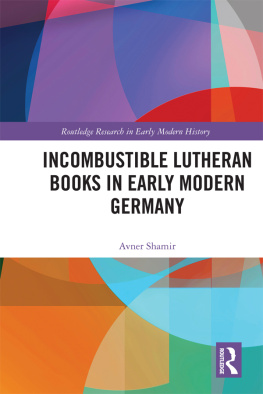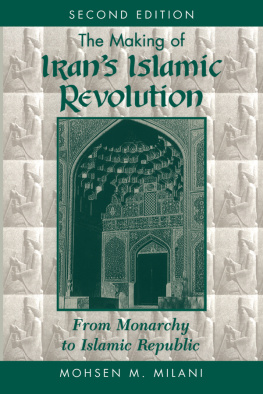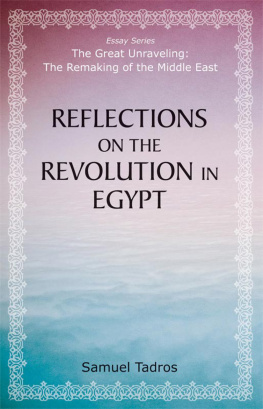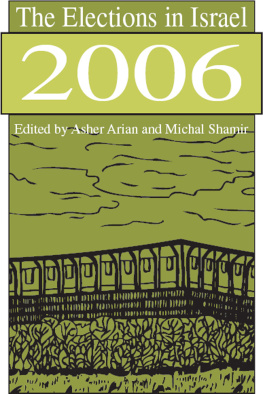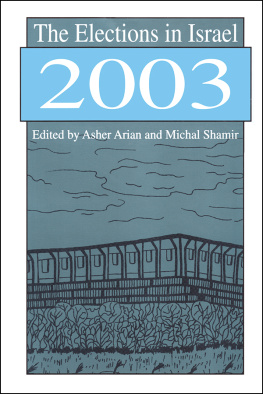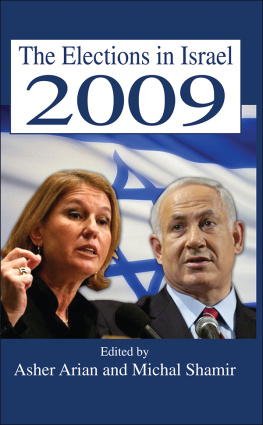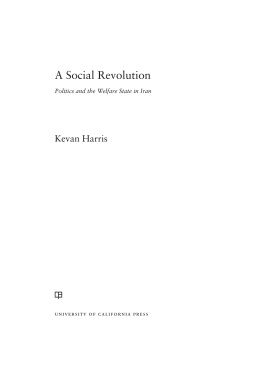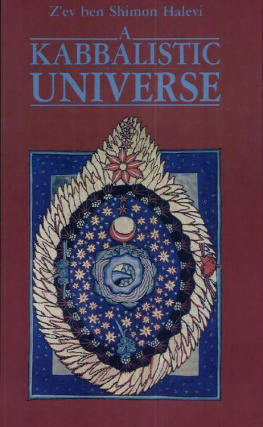Shimon Shamir - Egypt From Monarchy to Republic: A Reassessment of Revolution and Change
Here you can read online Shimon Shamir - Egypt From Monarchy to Republic: A Reassessment of Revolution and Change full text of the book (entire story) in english for free. Download pdf and epub, get meaning, cover and reviews about this ebook. year: 1995, publisher: Routledge, genre: Politics. Description of the work, (preface) as well as reviews are available. Best literature library LitArk.com created for fans of good reading and offers a wide selection of genres:
Romance novel
Science fiction
Adventure
Detective
Science
History
Home and family
Prose
Art
Politics
Computer
Non-fiction
Religion
Business
Children
Humor
Choose a favorite category and find really read worthwhile books. Enjoy immersion in the world of imagination, feel the emotions of the characters or learn something new for yourself, make an fascinating discovery.
- Book:Egypt From Monarchy to Republic: A Reassessment of Revolution and Change
- Author:
- Publisher:Routledge
- Genre:
- Year:1995
- Rating:4 / 5
- Favourites:Add to favourites
- Your mark:
- 80
- 1
- 2
- 3
- 4
- 5
Egypt From Monarchy to Republic: A Reassessment of Revolution and Change: summary, description and annotation
We offer to read an annotation, description, summary or preface (depends on what the author of the book "Egypt From Monarchy to Republic: A Reassessment of Revolution and Change" wrote himself). If you haven't found the necessary information about the book — write in the comments, we will try to find it.
Shimon Shamir: author's other books
Who wrote Egypt From Monarchy to Republic: A Reassessment of Revolution and Change? Find out the surname, the name of the author of the book and a list of all author's works by series.
Egypt From Monarchy to Republic: A Reassessment of Revolution and Change — read online for free the complete book (whole text) full work
Below is the text of the book, divided by pages. System saving the place of the last page read, allows you to conveniently read the book "Egypt From Monarchy to Republic: A Reassessment of Revolution and Change" online for free, without having to search again every time where you left off. Put a bookmark, and you can go to the page where you finished reading at any time.
Font size:
Interval:
Bookmark:
 TEL AVIV UNIVERSITY
TEL AVIV UNIVERSITY
- 1 Egypt's Political Experience: The 1952 Revolution as an Expression of the Historical Heritage
- 2 The Continuity of the Egyptian State and the Ambiguity of the Revolution
- 3 Islam in the State: Pragmatism and Growing Commitment
- PART 2: ECONOMIC AND SOCIAL PATTERNS
- 4 Reflections on the Extent of Egypt's Revolution: Socioeconomic Indicators
- 5 Egypt from Laissez-Faire to "Soft Revolution": Birthrates, Saving Patterns, and Economic Growth
- 6 Agricultural Cooperatives: Continuity and Change in Rural Egypt
- 7 Foreign Capital, Foreign Communities, and the Egyptian Revolution of 1952
- 8 Copts and Other Minorities in the Development of the Egyptian Nation-State
- 9 The Seeming Duality: Patterns of Interpersonal Relations in a Changing Environment
- PART 3: THE ROLE OF INTELLECTUALS
- 10 Continuity and Innovation in Egyptian Islam: The 'Ulama Vis--Vis the Militants
- 11 From Banna to Qutb and "Qutbism": The Radicalization of Fundamentalist Thought Under Three Regimes
- 12 Liberalism: From Monarchy to Postrevolution
- 13 An Intellectual Source for the Revolution: Tawfiq al-Hakirn's Influence on Nasser and His Generation
- 14 Egyptian Intellectuals and the Revolution: The Case of 'Abd al-Rahman al-Rafi'i
- 15 Journalists and the Press: The Vicissitudes of Licensed Pluralism
- PART 4: ISSUES OF FOREIGN RELATIONS
- 16 A Revolution Prefigured: Foreign Policy Orientations in the Postwar Years
- 17 The Sudan's Path to Independence: Continuity and Change in Egypt's Policy Toward the Sudan
- 18 Egypt and the Palestine Question Before and After the Revolution
- ii
Font size:
Interval:
Bookmark:
Similar books «Egypt From Monarchy to Republic: A Reassessment of Revolution and Change»
Look at similar books to Egypt From Monarchy to Republic: A Reassessment of Revolution and Change. We have selected literature similar in name and meaning in the hope of providing readers with more options to find new, interesting, not yet read works.
Discussion, reviews of the book Egypt From Monarchy to Republic: A Reassessment of Revolution and Change and just readers' own opinions. Leave your comments, write what you think about the work, its meaning or the main characters. Specify what exactly you liked and what you didn't like, and why you think so.



